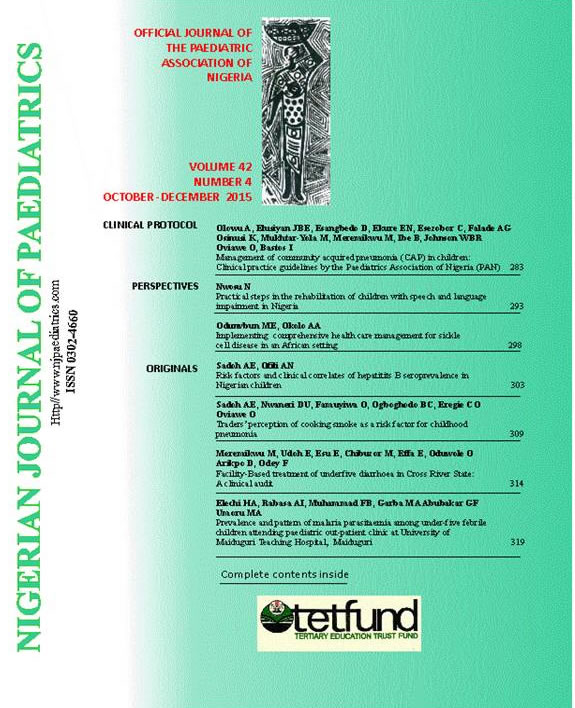Traders’ perception of cooking smoke as a risk factor for childhood pneumonia
Abstract
Abstract: Background: Childhood pneumonia is the foremost killer of under-fives. Indoor air pollution by smoke from cooking
fuel is a major risk factor for childhood pneumonia. The knowledge of caregivers about risk factors can facilitate the practice of
appropriate preventive measures. This study set out to evaluate the perception of traders about cooking smoke as a risk factor for
childhood pneumonia.
Methodology: A researcher administered, questionnaire based, cross-sectional study was carried out at a major market in Benin City prior to a market rally to celebrate World Pneumonia Day 2014. The respondents were traders. Information on biodata, place of cooking, fuel for cooking and presence of under-fives in the cooking area of homes of respondents was sought.
Results: There were 1374 respondents of which 1192(88.5%) werevfemales. Only 67(4.9%) respondents considered smoke from
cooking fuel a risk factor for pneumonia while 99(7.2%) considered avoidance of smoke as a method for preventing pneumonia.
Firewood (biomass fuel) was utilized by 272(19.8%) respondents. Respondents with no education were significantly more likely to
use firewood (p<0.000).All respondents with under-fives reported having them in the cooking area. Having a child who had
suffered pneumonia in the past was not significantly associated with knowing that smoke was a riskfactor for childhood pneumonia p>0.05.
Conclusion: There is poor awaren ess of smoke as a risk factor for childhood pneumonia while the use of unclean fuel is significant. As part of health education on childhood pneumonia, smoke as a risk factor should be emphasized. Government should make cleaner fuels more available, accessible and affordable. Keywords: traders, cooking smoke, risk factor, childhood pneumonia
Downloads
Published
Issue
Section
License
This is an open-access journal, and articles are distributed under the terms of the Creative Commons Attribution 4.0 License, which allows others to remix, transform, and build upon the work even, commercially, as long as appropriate credit is given to the author, and the new creations are licensed under identical terms

